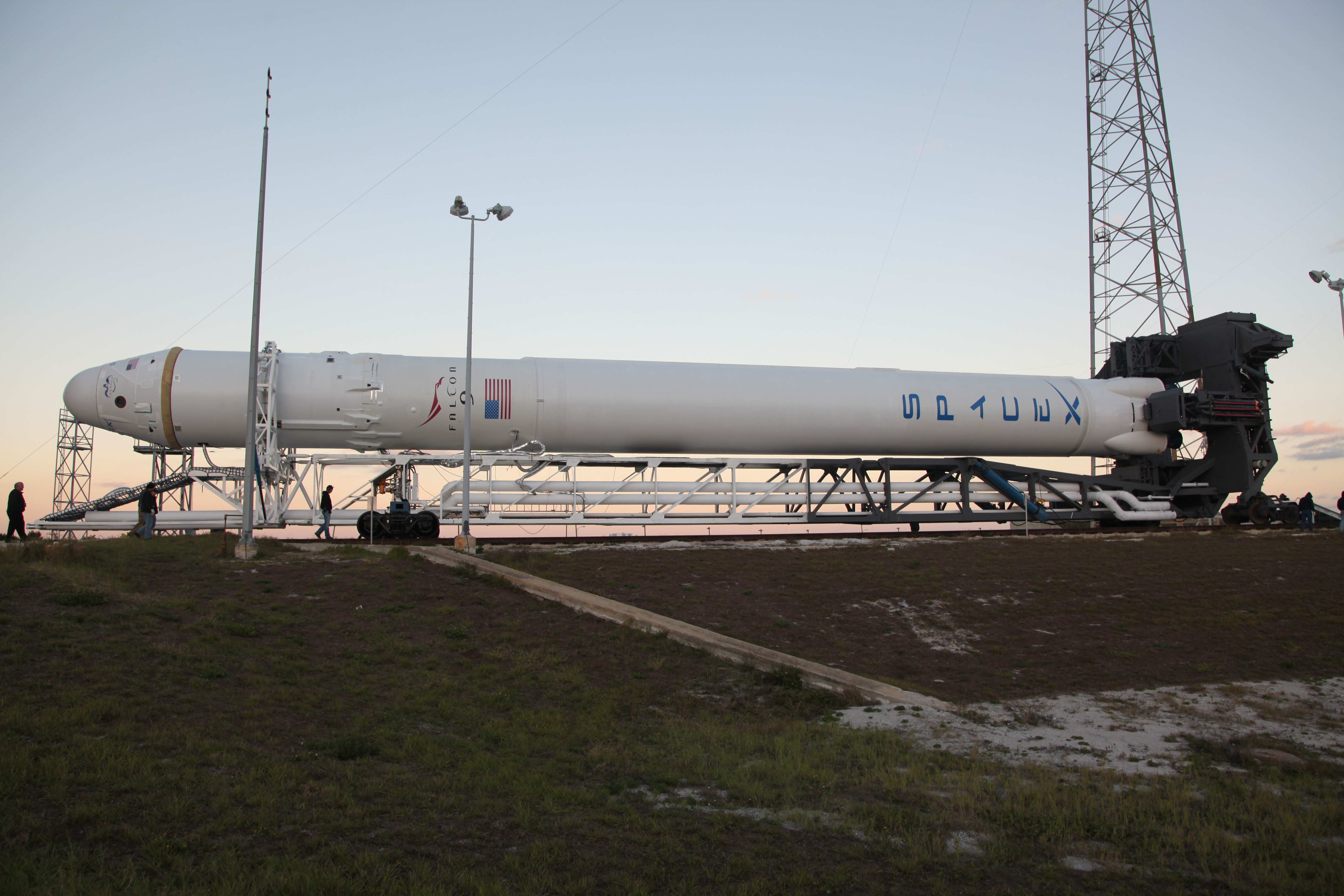A static test firing of the SpaceX Falcon 9 rocket was cut short as computer systems shut down the first-stage engines before the test was complete. The firing was only going to last two seconds, but the engines ran for 1.1 sec due to high engine chamber pressure, according to SpaceX. Space News reported that engineers are analyzing the data and that a second attempt is likely to occur tomorrow, Dec. 4. This abort occurred just four days before SpaceX is schedule to conduct the maiden launch of its Dragon space capsule on board the medium-class Falcon 9.
This video is from SpaceX’s webcast of the firing and unfortunately is a bit jumpy.
The first-stage firing was part of a dress rehearsal conducted in preparation for the planned Dec. 7 launch, the first of three increasingly complicated flight demonstrations of Falcon 9 and Dragon under the company’s Commercial Orbital Transportation Services (COTS) agreement with NASA.
[/caption]
In a press release from SpaceX from Dec. 2, the company said the rehearsal would “exercise the countdown processes and end after the engines fire at full power for two seconds, with only the hold-down system restraining the rocket from flight.”
After the test, SpaceX said they would conduct a thorough review of all data as engineers make final preparations for the upcoming launch.
The rockets uses kerosene and liquid oxygen, and the nine Merlin engines generate one million pounds of thrust in vacuum.
The $278 million COTS agreement has SpaceX developing and demonstrating hardware capable of ferrying cargo to and from the International Space Station.
We’ll post more information about the abort as it becomes available.


Nice test fire. All, liquid rocket thrusters are tested for qualification before flight. Many are fine tuned during those test firing. So what you are seeing is not unusual. But there is a limit to how many times one can fire them. Does anyone know how many time Falcon thruster can be fired?
Thanks for posting a utube vid.
I thought the crap video link was because I was watching it in Africa.
Cant SpaceX provide a better video link ? or pipe the video through someone else who can do it properly ?
Disappointed 🙁
Uh oh. Let’s hope it was the test parameters rather than something amiss with the engines.
Emilio, good question. I would assume they have some upper limit set by ablation of the nozzles.
With the same nozzles (AFAIK), a Falcon 9 first stage burns nominally 170 s and Falcon 1 nominally 169 s. [Wp]
The longest static test burn I can find is 178 s.
The first Falcon 9 used a 10 s and a 30 s before its use at nominally 170 s. (See latest link.) So I would assume the Merlin 1C nozzles stands for at least 210 s total burn.
@ T L O, Thanks for the link. One thing I picked up from reading it was “Producing 387.8 tonnes of total thrust while burning nearly 227 tonnes of propellant, the burn lasted 178 seconds.” is that all you get 58% more?
UGLIEST
ROCKET
EVER
sorry i had to say it again…
Update: Third test may have been the charm I see elsewhere: but at least they have now done the static test successfully.
@ Tripleclean:
Sorry, I don’t understand the question.
@ Olaf:
I can’t google it, but IIRC Musk explained the roll issue investigation outcome in a podcast a few days after launch. It was some easily fixed controller issue, I believe; it didn’t even make their updates, seems like.
On the reliability issue: it is very few rockets that launch successfully 1st trial (see Apollo, SpaceX earlier experiences et cetera). This bodes well and speak against your analysis; the observational tests so far can’t reject the hypothesis that this is a reliable vehicle as is.
Of course it will take a long time before they reach the launched reliability record of the space shuttle. It gets good numbers on per man basis, but the Dragon capsule has the man capability to catch up eventually. And the shuttle was never very _launch_ reliability robust in the first place, as witnessed by the final (or next to final) flight troubles.
Falcon 9 can’t be anything but much cheaper for manned flight. I think we should be thankful for that.
I do agree wit Renoor, it is ugly.
But if it does its job the aesthetics is not important.
I have strong doubts with their many engines design, increased risk of faults.
Also did they already explain why their last launch the last stage began spiralling around? Or is it a company secretN
One thing I can tell you, it will twice as long and twice as expensive minimal to build the rocket to be reliable. Commercial companies tend to lie about their quality in order not to upset the people that invest money.
http://www.nasa.gov/145590main_Digital_Media.asx
A Proper link to watch them live 😉